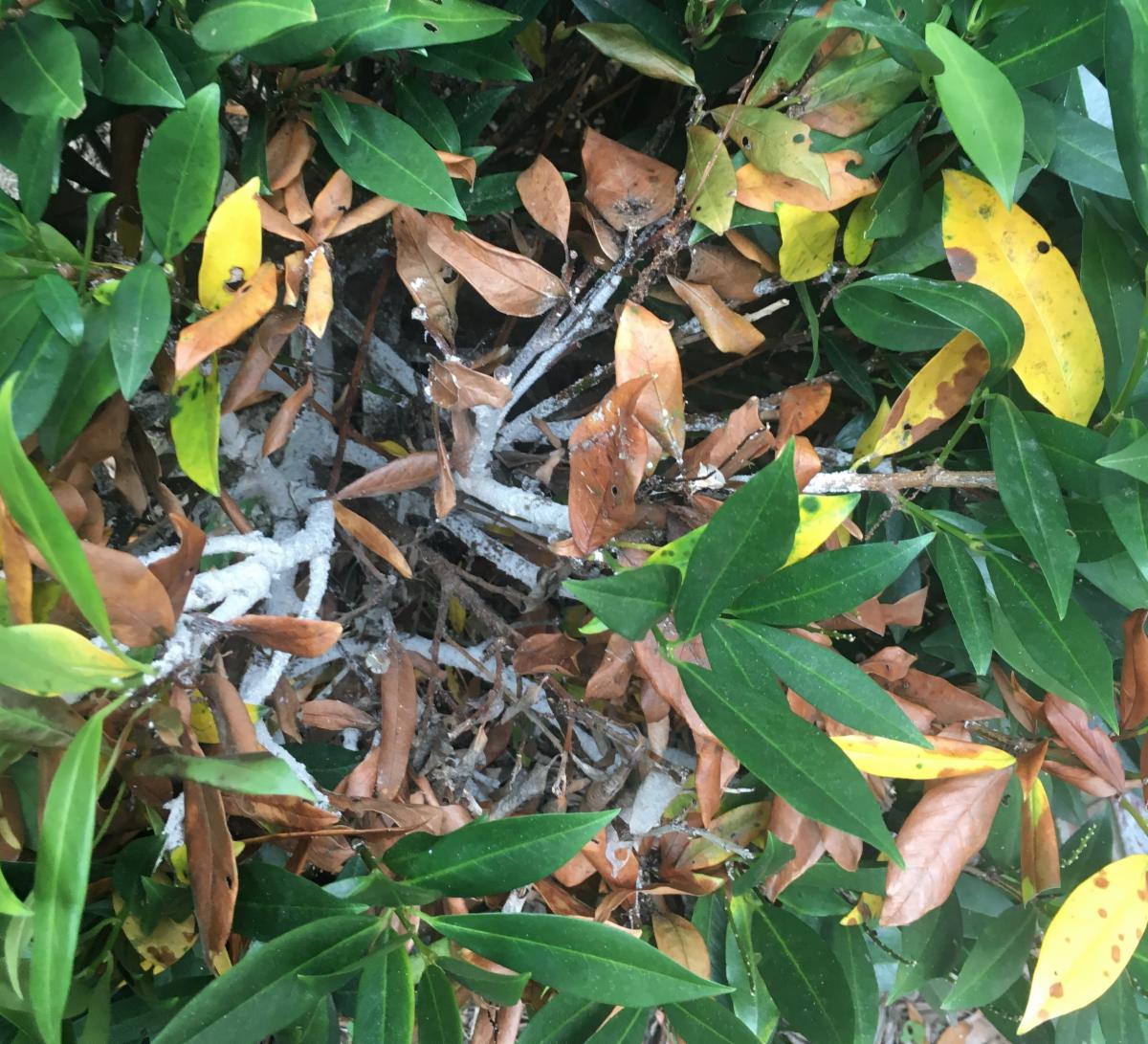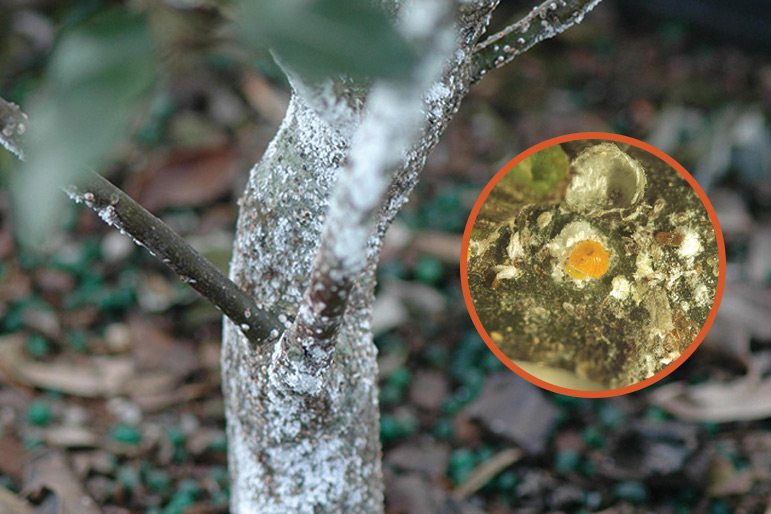If you have Laurels, Cherry Trees, Privets, Catalpas, Euonymus, or Lilacs in your landscape, you should be aware of a key pest that leads to decline if left uncontrolled: White Prunicola Scale.
When it comes to this tiny armored pest, knowing what to look for, where to look for it, and how to manage an infestation can ensure that your plants remain happy and healthy for many years to come.

Who
White Prunicola Scale are hardy and persistent scale insects. They will first appear in small numbers, but will reproduce rapidly, typically having three generations in a single year. Armed with a crusty shell, they are not susceptible to natural predators which makes frequent plant inspection a key component of a successful management and control strategy.
What
Knowing what to look for is key to identifying an infestation and taking action before irreversible plant decline occurs. They feed on plant cell contents from twigs and branches. Leaf yellowing, premature leaf-drop and dieback are key indicators of an infestation.
Where
They will appear as cottony masses on the bark, generally near the base or lower portion of the branches closest to the trunk. They are often mistaken for other scale insects or over-looked altogether. When left to thrive, an infestation will result in a thick encrustation (as in the photos, above and below).
How
So how do you protect your plants against White Prunicola Scale? Periodically examining the bark of selected branches – especially those sections closer to the trunk – is key to preventing an infestation. Being aware of infestation indicators – such as premature leaf-drop, yellowing, or twig dieback – are also key. Most importantly, if your plant inspection or key indicators indicate an infestation, contact your consulting arborist immediately so they can assess the plant’s condition and devise a targeted treatment strategy!
